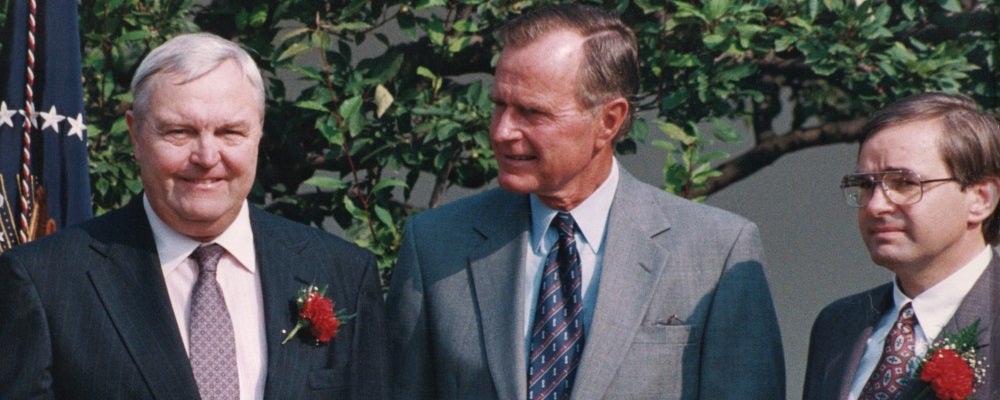Professor Geoffrey Boothroyd, internationally renowned for breakthrough research in design for manufacturing assembly (DFMA), passed away peacefully on January 3 at the age of 91.
The British educator joined University of Rhode Island’s (URI) then mechanical and industrial manufacturing engineering department in 1985. He was brought on to head the Advanced Manufacturing Institute, coordinating the Design for Manufacturability Center with the robotics research center at the newly opened Kirk Applied Engineering Laboratory. Boothroyd brought international acclaim, millions of dollars in grants to support his research, and passed on his revolutionary engineering principles to future engineers.
URI Assistant teaching professor Meredith Westner ’93, was an undergraduate student under the guidance of Dr. Boothroyd. “It was an exciting time with so much positive attention on the department,” said Westner. “My own senior project under Dr. Boothroyd was for Caterpillar. I am sure to still mention that DFMA was developed here at URI to my students today.”
Boothroyd wrote the definitive analytical textbook Automatic Assembly, and he and fellow professor and research partner Peter Dewhurst published Design for Assembly. They later co-founded Boothroyd Dewhurst Inc. in 1980, a company devoted to commercializing the results of research in design for manufacture and assembly. (DFMA.) This methodology helped achieve dramatic cost savings across a wide spectrum of global industries. Boothroyd and Dewhurst were awarded the Rhode Island Governor’s Science and Technology Award in 1989 and the National Medal of Technology by President Bush for the concept, design and commercialization of DFMA in 1991.
Born in Manchester, England, Boothroyd obtained a Bachelor of Science in Engineering from the University of London in 1956, followed by a Doctor of Philosophy in 1962 and a Doctor of Science in 1974. He wed Shirley Lewis in 1954 and they came to the U.S. in 1967, beginning his research at the University of Massachusetts Amherst. He was married 64 years until his wife’s death in 2018. He leaves behind a brother, two daughters, and grandchildren. According to his obituary, he was a highly devoted family man, cherishing his role as a husband and father, balancing his professional achievements with a rich and rewarding personal life.
DFMA continues to be one of the most-widely used methods of manufacturing in the world.
Story by Krysta Murray

